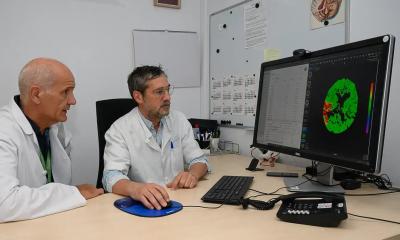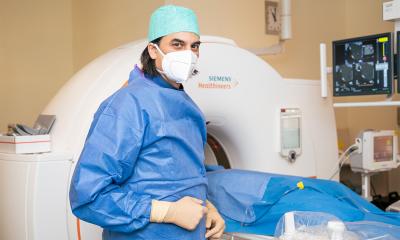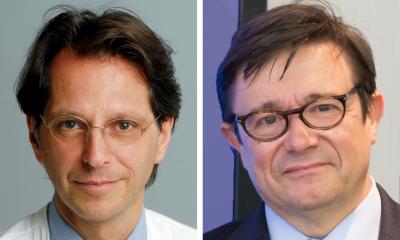Interview • Pros & cons
‘Interventional radiology has become fashionable!’
Fernando López Zárraga is a member of the Executive Board of the Spanish Society of Vascular and Interventional Radiology (SERVEI). In an interview with European Hospital he explains issues facing interventional radiology in Spain and why this is becoming an increasingly attractive field.
Interview: Mélisande Rouger
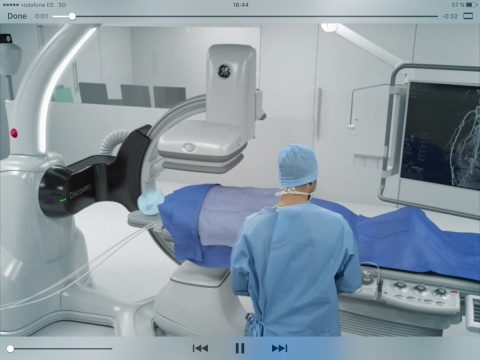
How did the audience respond to the central interventional radiology (IR) theme at the recent meeting of the Spanish Society of Radiology?
‘Pretty well, judging from attendance. The interventional committee held ten sessions and every other committee (thorax, abdomen imaging, etc.) organised at least one session on IR. One of the three pre-courses before the meeting was dedicated to IR, and even radiographers sessions featured a session on embolisation. It seems IR has become fashionable!
‘Many sessions focused on drainage; but there are many general radiologists who already perform liver or breast radiofrequency, or are interested in puncturing with fine needles or thick probes. We can see that people are overcoming their fear of needles, at least within their own area, which is very positive.
‘In Spain the newest application is probably thermo-ablation with microwave, cryoablation and NanoKnife; it’s showing good therapeutic results in liver metastasis and kidney tumours smaller than 2 cm. These techniques should be performed more often, but we need more experiments and prospective methodological studies. Cryoablation is very interesting for patients who are not candidates for surgery.
‘Radiofrequency in thyroidal nodule has been around for many years and some surgeons even prefer this option to avoid complications in the neck, a delicate area. Next should come embolisation of the haemorrhoidal arteries and percutaneous creation of arteriovenous fistula for haemodialysis. Prostate embolisation is an interesting option for patients who usually wear a urinary bag; it’s an established procedure in Portugal, even if urologists have recently questioned it.’
Spain has a long research tradition. Are there interesting projects in this field at the moment?
‘Various studies are underway; teams at Navarra University and La Fe Hospital, in Valencia, are assessing the impact of Ytrio 90 radio-embolisation in hepatic tumour. Other researchers at Hospital Reina Sofia in Cordoba are leading a study on stem cells in peripheral revascularisation; they have already obtained good results and helped reduce the number of amputations of lower limbs with significant ischemia. In Zaragoza, Dr Gregorio is leading a multicentre registry on vena cava filters.’
Could bariatric arterial embolisation (BAE) gain ground in obesity treatment?
‘In the Vitoria area surgeons treat morbid obesity; they are not really asking for our participation. BAE is co-adjuvant to surgery; it helps to prepare a patient by cutting the production of satiety hormone ghrelin and helps avoid complications during surgery. Interventional radiologists can place prosthesis inside the digestive track, to secure suture or for the embolisation of potential haemorrhage in post surgery. Now we need to convince surgeons of our efficacy!’
Might IR applications also increase in oncology?
‘Spain has one of the leading hospitals in liver cancer treatment: the Hospital Clínico in Barcelona. IR applications here are growing, especially in thermo-ablation or thermo therapy. Some specialists also perform Ytrio 90 radio-embolisation and a many work with electroporation NanoKnife and microwaves in pancreatic cancer and kidney tumours.’
How many interventional radiologists are there in Spain?
‘SERVEI has 327 members; there are potentially more interventional radiologists in Spain. On average every centre has three to four specialists.’
Are there issues with contrast products or devices?
‘Recently an important company had to take off one of its diagnostic catheters because of a series of bad events. The cause of this problem still needs clarification.’
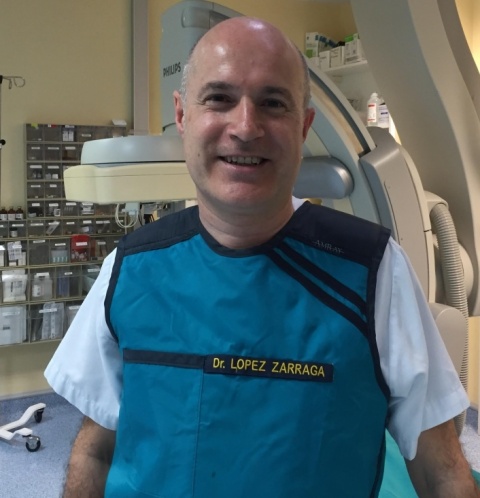
What are the challenges in IR?
‘We need good registries to assess our own activity and IR therapeutic efficacy compared to surgery. Obtaining subspecialty certification would be another important step forward. We also need to become more visible to the patient. We are not regarded as interventionists; the referring clinician is. We must succeed in following up patients before and after an intervention. We are like navy seals: they only want us when things are going really badly!’
How can you rouse general radiologists’ interest in IR?
‘A part of training should be dedicated to learning basic interventional procedures. This is a challenge now with the ‘core training’ scheme, which fuses radiology and nuclear medicine during the first two years; but, if we succeed in being recognised as a subspecialty, students may have the opportunity to spend some time in our operating room (OR). The Fellows programme, being developed at 25 centres, and which can certificate IR in Spain, is a potential hotbed.’
Other specialists perform their own interventional procedures. What is the added value of being radiologists?
‘We know imaging of all the body; we work not just on pathology but also everything around it. We have a sort of integrated GPS in our brain; this enables us to improve intervention quality significantly. It’s a strength we should use. Also we know how to adapt and work with other medical professionals; collaboration is in our genes.’
Profile:
An interventional radiologist since 1997, Fernando López Zárraga was instrumental in establishing the vascular and interventional radiology department at Santiago Apostol Hospital, now part of Álava University Hospital. He is also second chair of the Executive Committee of the Spanish Society of Vascular and Interventional Radiology, as well as president of the society’s annual congress in 2017 to be held in Vitoria – Gasteis. He was part of the working group for quality in a radio-diagnosis programme for the ISO 9001 (IQN – AENOR) Certificate and helped to establish protocols for on call security in Álava and the Codigo Ictus.
31.08.2016



